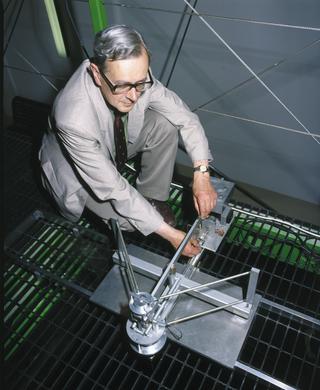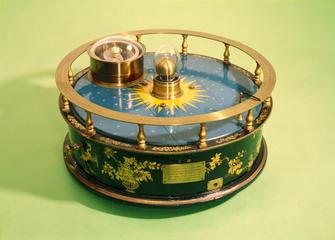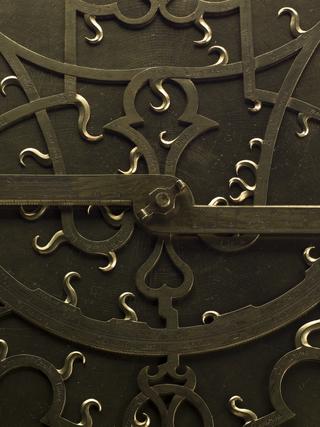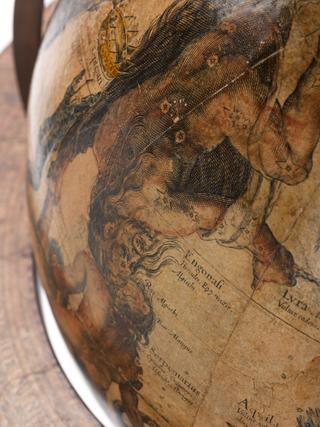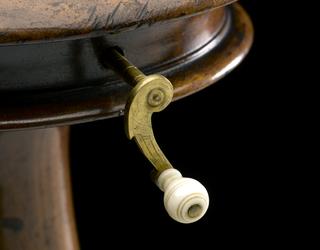
Precession of the Equinoxes model, 1855-1860
- designer:
- Thomas William Burr




Apparatus for showing the precession of the equinoxes, under glass shade, which belonged to Sir William Huggins. Thought to be an example of a device designed by Mr T. W. Burr and made by the London chronometer maker, William Hislop, c,1855.
Dated to the middle of the nineteenth century, this terrestrial globe was used to demonstration the causes for precession of the equinoxes. Designed by Mr T W Burr, the model was made by the London chronometer maker, William Hislop. By spinning the globe, the device illustrates the causes for the wobble in the Earth's axis of rotation that moves over a 26,000 years period. This produces a shift in the date of the seasons as the Sun's path changes with respect to the Zodiacal Constellations. William Huggins a pioneer in the discipline of astrophysics is thought to have owned this particular precession model.
Details
- Category:
- Astronomy
- Object Number:
- 1915-547
- Measurements:
-
overall (without glass cover): 180 x 160 mm
- credit:
- Mr Thomas H. Court
